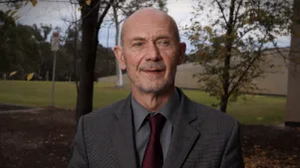|
Author
Nicky Ison
is the energy transition manager at WWF-Australia.
|
Rich in renewable resources, we are in pole position to become a renewable energy superpower.
But based on Tuesday’s federal budget, when compared to the investment other countries are making, we risk being left behind.

|
|
Photovoltaic modules at a solar farm on the outskirts of
Gunnedah. Credit: Bloomberg |
The good news is we have the technology we need to decarbonise, from solar panels (which Aussies helped to invent) and wind turbines to batteries and electric vehicles, which require critical minerals that Australia has in abundance.
What is needed is government support to accelerate the deployment of these technologies. Yet, such support was notably absent from the 2021 budget.
If the 2020 budget could be characterised as having pro-renewables investments exceeding $1 billion announced under the guise of pro-gas rhetoric, Tuesday’s budget doubled down on gas not just in rhetoric but in over half-a-billion dollars in funding commitments.
Given we have more leeway in this year’s budget to invest in the country’s future as we seek to rebuild post-pandemic, it is a missed opportunity to put Australia on the path to become a renewable superpower.

|
|
President Joe Biden signs an executive order on climate change
earlier this year. Credit: AP |
The new Biden administration has tabled its American Jobs Plan (also known as the Infrastructure Plan), which sets a new bar. It represents an investment of around 5.65 per cent of America’s GDP in clean recovery stimulus measures.
Other leading countries are committing between 1-2 per cent of GDP over the next decade. Meanwhile, Australia’s current pledges equate to a mere 0.14 per cent of GDP.
There are some positive steps. Investments in hydrogen generation – provided it is powered by renewables – and green steel are much needed to decarbonise our energy-intensive heavy industries. And funding to support Australian businesses with the uptake of more energy efficient industrial equipment and business practices is welcome.
|
Future Power 
|
| Hype or holy grail: What’s driving the hydrogen rush? |
But the comparative lack of investment will not serve Australia well in the long-term. Indeed, the consequences of inaction may be felt sooner than we think.
Not only will we miss out on new jobs and economic windfalls, we also risk exposing Australian exports to corrective measures by more climate-minded trading partners as they seek to level the playing field.
The European Parliament voted in favour of such a levy earlier this year, with its Carbon Border Adjustment Mechanism.
This would see tariffs imposed on the emissions involved in the production and shipping of goods being traded. The US, Japan and Korea are considering similar measures.
There are signs, however, that the tide is turning in Australia. WWF-Australia recently released its Renewable Superpower Scorecard, which presents a snapshot of how states, territories and the federal government are performing in the race to become a renewable superpower.
ACT and Victoria are pledging investments more akin to leading countries, as a proportion of their GDP. South Australia and Tasmania are thinking beyond “100 per cent” renewables, recognising the opportunity to export.
And projects like Sonnen’s battery assembly plant in South Australia and the Kidston solar and pumped hydro project in Queensland show what is possible when political foresight and investment align.
Paris Agreement
|
|
European-style carbon taxes destined to spread, says former trade
chief
|
Just imagine how fast we could move, and what we could achieve as a nation if our federal government stepped up and led from the front on this critical agenda.
As global action on climate change gathers pace, the UN Climate Change Conference in November is a notable milestone. It is a point at which Australia will be judged by our international allies and trading partners.
We have a five-month window to act and secure our place at the leaders’ table. The alternative is we squander the economic opportunity of a century.
Links
- (AU The Guardian) The 2021 Federal Budget Was Light On Climate And Environment Measures. But Here’s What You Should Know
- (New Yorker) Renewable Energy Is Suddenly Startlingly Cheap
- New Report Hails The Decade Of Renewables As 2020 Hits Capacity Record
- (AU) Victoria’s Grid Runs On 50 Per Cent Renewable Energy For First Time
- (AU) Coal’s Retreat As Renewables Surge Is A Shock, But Not A Surprise
- ‘All about evolution’: Here’s what to do with a dead power station
- The race to rescue Australia’s 50 most vulnerable plant species
- Blowing in the wind: Have we missed our chance to become a renewables superpower?
- Turnbull says ‘right wing craziness’ drives the government on climate
- Sydney to spend $24 million to accelerate net-zero goal by five years
- ‘All bets are off’: Fire weather trumps forestry, prescribed burning

No comments:
Post a Comment